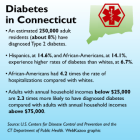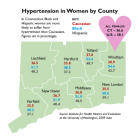Women's Health
Medicaid Offers Birth Control Right After Delivery
|
Low-income women in Connecticut who have just given birth and know they don’t want to get pregnant again anytime soon are now offered a long-acting birth control option postpartum. Medical providers say the policy by the U.S. Department of Health and Human Services will reduce the number of unplanned pregnancies, as well as lead to better maternal health outcomes by ensuring pregnancies are spaced a healthy length of time apart. Connecticut’s HUSKY program is one of 26 state Medicaid programs nationwide that reimburses hospitals for administering long-acting reversible contraception (LARC)—namely, intrauterine devices (IUDs) and subdermal implants—to Medicaid patients. HUSKY started reimbursing for the devices last year. “It’s a great thing,” said Dr. Elizabeth Purcell, an obstetrician and gynecologist practicing in Hartford.






